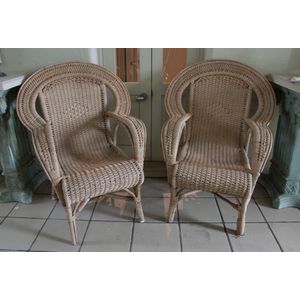Bendigo Pottery Collection: Teapot, Swans, and Crocks
A collection of Bendigo pottery, 19th century and later comprising a teapot, a pair of salt glazed swans and three crocks the teapot 13 cm high
You must be a subscriber, and be logged in to view price and dealer details.
Subscribe Now to view actual auction price for this item
When you subscribe, you have the option of setting the currency in which to display prices to $Au, $US, $NZ or Stg.
This item has been sold, and the description, image and price are for reference purposes only.
- Stoneware Crocks - Stoneware crocks have a long history dating back to the 17th century in Europe. They were first made by German potters in the Rheinland region, and were known for their durability and resistance to thermal shock. These early stoneware crocks were typically made from a mixture of clay, feldspar, and flint, and were fired at high temperatures to make them strong and non-porous.
The popularity of stoneware crocks quickly spread to other parts of Europe and eventually to America, where they were used by early settlers for food storage and preservation. They were particularly popular in the colonial period, where they were used for pickling and preserving food, as well as for fermenting and storing beverages like beer and cider.
During the 19th century, stoneware crocks became even more popular in America, as they were used in the growing industry of commercial food preservation. Many potteries were established in the United States, making stoneware crocks for commercial use and for households.
Stoneware crocks remained popular throughout the 20th century, but with the advent of modern food preservation methods, their use has diminished. However, they are still used today by many people who prefer traditional methods of food preservation and fermentation. - Salt Glazed - Salt glazing involves throwing salt into the kiln when it is at its highest temperature, usually around 2,300 to 2,400 degrees Fahrenheit (1,260 to 1,320 degrees Celsius). The salt vaporizes and forms a glaze on the surface of the pottery, creating a range of effects depending on how the salt is applied and the firing conditions. This glazing method was first developed in Germany in the 15th century and quickly became popular throughout Europe and North America. It was particularly popular for making stoneware pottery, such as jugs, crocks, and other utilitarian objects.
Salt glazes can produce a range of colors, including gray, brown, blue, and even pink or purple in some cases. The texture of the glaze is typically rough and pebbled, with a matte or satin finish. The process of salt glazing can be unpredictable, with variations in temperature and salt application leading to subtle variations in the finished product.
Salt glazing is still used by potters and ceramic artists although it is less common than it was in the past.
This item has been included into following indexes:
Visually similar items

Famille rose export plate, Qinglong-style. Diameter 28 cm
Sold by
in
for
You can display prices in $Au, $US, $NZ or Stg.

Facetted Baltic amber and silver earrings
Sold by
in
for
You can display prices in $Au, $US, $NZ or Stg.

A pair of well-proportioned Victorian style cane chairs
Sold by
in
for
You can display prices in $Au, $US, $NZ or Stg.

An 18ct white gold half hoop diamond ring, millegrain set with ten round brilliant cut diamonds totalling 0.21ct, size M
Sold by
in
for
You can display prices in $Au, $US, $NZ or Stg.
